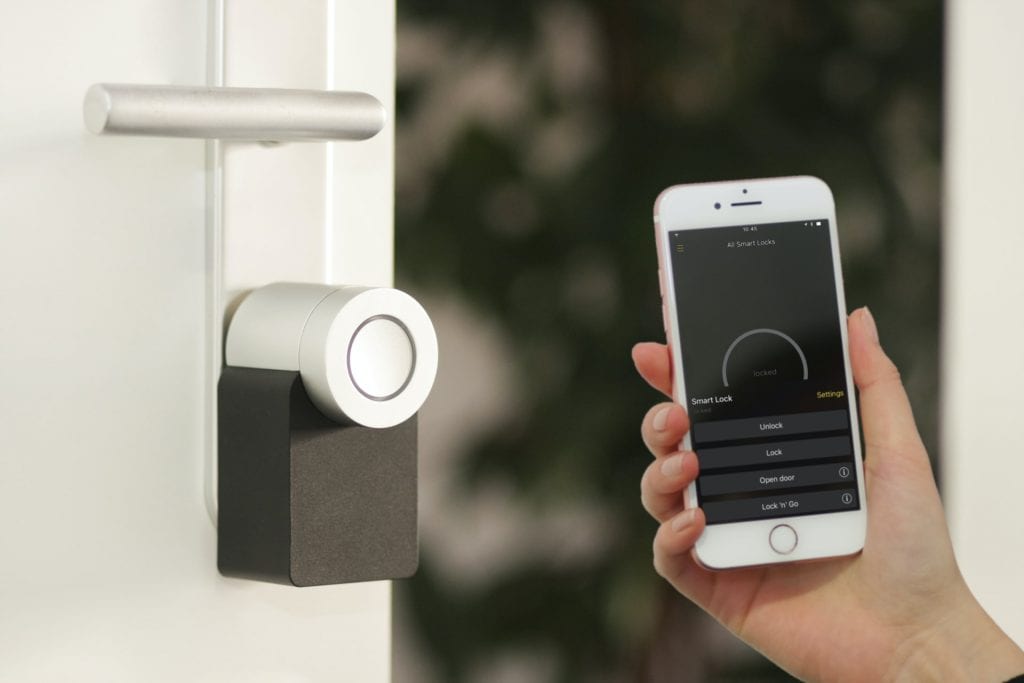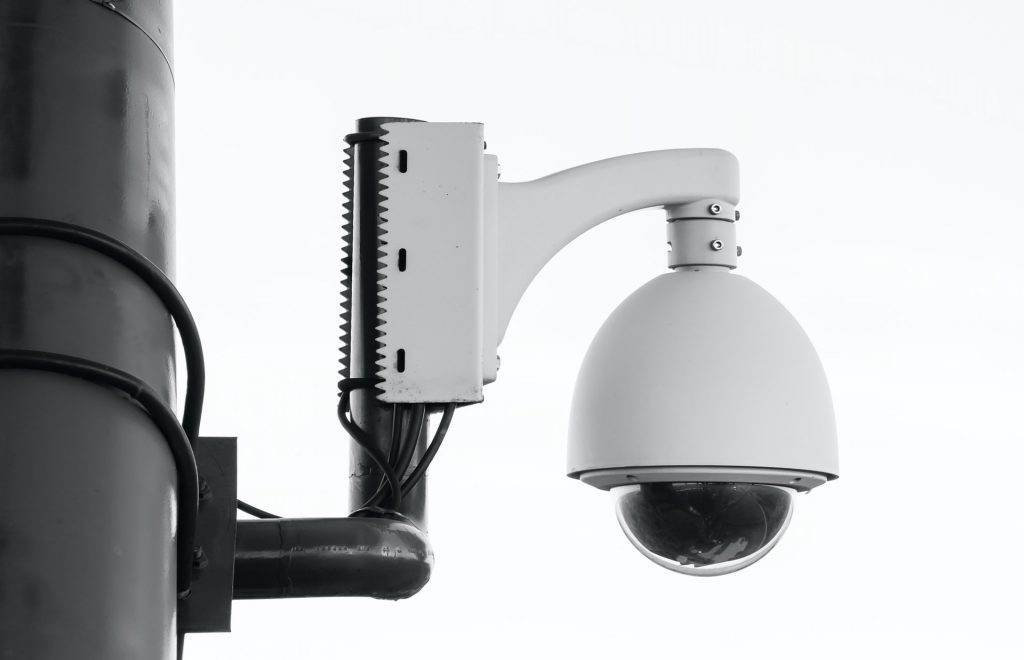It seems as though it would be nearly impossible to function without access to the wireless internet in the modern world. People everywhere rely on wi-fi for everything from entertainment to achieving their goals. But with the ubiquity of the internet comes an underlying danger in the form of hackers who look to exploit security flaws to gain access to your private data and information.
As we continue into a future in which everything from our phone to our refrigerator operates using a wireless internet connection, it is increasingly important to understand how to keep our wi-fi safe and secure.
This article will provide you with everything you need to understand the basics of wi-fi security and what wireless security you should use.
What is Wireless Security?
Wireless security is, in essence, the prevention of unwanted users from accessing a particular wireless network. More so, wireless security, also known as wi-fi security, aims to ensure that your data remains only accessible to users you authorize.
Home Security FAQs
What Is The Most Secure Type Of Wireless Security?
WPA2, while not perfect, is currently the most secure choice. Temporal Key Integrity Protocol (TKIP) and Advanced Encryption Standard (AES) are the two different types of encryption you'll see used on networks secured with WPA2.
How Many Types Of Wireless Are There?
There are four types of wireless networks -- wireless local area networks, wireless metropolitan area networks, wireless personal area networks and wireless wide area networks -- each with its function. Below we discuss the different types of wireless networks and the various equipment and connections they require.
What Are The Two Types Of Wireless LANs?
As standardized by IEEE 802.11, WLANs operates in two basic modes, infrastructure and ad hoc mode. Infrastructure Mode − Mobile devices or clients connect to an access point (AP) that in turn connects via a bridge to the LAN or Internet.
What Is Another Name For A Wireless Security Key?
WPA Key or Security Key: The password to connect your wireless network. It's also called a wi-fi Security Key, a WEP Key, or a WPA/WPA2 Passphrase. This is another name for the password on your modem or router.
What Are The Types Of Wireless Security?
As previously mentioned, there are four main types of wireless security protocols. Each of these varies in utility and strength.
Various types of wireless security protocols have been developed for the safety of home wireless networks. Wireless security protocols are WEP, WPA, and WPA2, which serve the same function but are different at the same time.
The Wired Equivalent Privacy (WEP) Protocol
Wired Equivalent Privacy (WEP) is the first security protocol ever implemented. Designed in 1997, it has become obsolete but is still used in modern times with older devices.
WEP uses a data encryption scheme based on a combination of user- and system-generated key values. However, it is widely known that WEP is the least secure network type as hackers have developed tactics of reverse-engineering and cracking the encryption system.
WEP was developed for wireless networks and introduced as a wi-fi security standard in September 1999. It is still prevalent in the modern era within older structures due to its age. Out of all protocols, WEP is considered to be the least stable. The wi-fi Alliance officially discontinued WEP in 2004.
The wi-fi Protected Access (WPA) Protocol
Wi-fi Protected Access (WPA) was developed to deal with the flaws found with the WEP protocol. WPA offers features such as the Temporal Key Integrity Protocol (TKIP), a dynamic 128-bit key that was harder to break into than WEP's static, unchanging key.
It also introduced the Message Integrity Check, which scanned for any altered packets sent by hackers, the Temporal Key Integrity Protocol (TKIP), and the pre-shared key (PSK), among others, for encryption.
WPA arrived as WEP's substitute due to the vulnerabilities contained within WEP. It has additional features, such as the Temporary Key Integrity Protocol (TKIP). This function was a 128-bit dynamic key that was harder to break into than a WEP static, unchanged key. WPA was a major improvement over WEP, but as the core components were rendered to be rolled out through firmware updates to WEP-enabled devices, they still relied on exploited elements.
The wi-fi Protected Access 2 (WPA2) Protocol
In 2004, WPA2 brought significant changes and more features to the wireless security gambit. WPA2 replaced TKIP with the Counter Mode Cipher Block Chaining Message Authentication Code Protocol (CCMP), a far superior encryption tool.
WPA2 has been the industry standard since its inception. On March 13, 2006, the wi-fi Alliance stated that all future devices with the wi-fi trademark had to use WPA2.
WPA2 is the successor to WPA and adds more features to the mix. For example, WPA2 replaced TKIP with the Counter Mode Cipher Block Chaining Message Authentication Code Protocol (CCMP), better encrypting data.
WPA2 has been very popular and has retained its place as the top protocol since 2004. In reality, on March 13 2006, the wi-fi Alliance announced that all potential wi-fi devices had to use WPA2.
WPA2-PSK
WPA2-PSK (Pre-Shared Key) requires a single password to get on the wireless network. It's generally accepted that a single password to access wi-fi is safe, but only as much as you trust those using it. A major vulnerability comes from the potential damage done when login credentials get placed in the wrong hands. That is why this protocol is most often used for a residential or open wi-fi network.
To encrypt a network with WPA2-PSK, you provide your router not with an encryption key but rather with a plain-English passphrase between 8 and 63 characters long. Using CCMP, that passphrase, along with the network SSID, generates unique encryption keys for each wireless client. And those encryption keys are constantly changed. Although WEP also supports passphrases, it does so only to more easily create static keys, which are usually composed of the hex characters 0-9 and A-F.
WPA2-Enterprise
WPA2-Enterprise requires a RADIUS server, which handles authenticating network users' access. The actual authentication process is based on the 802.1X policy and comes in several different systems labelled EAP.
There are just a few components that are needed to make WPA2-Enterprise work. Realistically, if you already have access points and some spare server space, you possess all the hardware needed to make it happen.
Because each device is authenticated before it connects, a private, encrypted tunnel is effectively created between the device and the network. The security benefits of a properly configured WPA2-Enterprise grant a near-impenetrable network. Businesses and governments most often use this protocol due to its heightened security measures.
The wi-fi Protected Access 3 (Wpa3) Protocol

WPA3 is the new kid on the block, and you can find it in the routers created in 2019. WPA3 introduces stronger security to public networks with this new format to prevent hackers from extracting information from them.
WPA3-PSK
To improve the effectiveness of PSK updates to WPA3-PSK, offer greater protection by improving the authentication process.
A strategy uses Simultaneous Authentication of Equals (SAE) to make brute-force dictionary attacks far more difficult for a hacker. However, this protocol requires interaction from the user on each authentication attempt, causing a significant slowdown for those attempting to brute-force through the authentication process.
WPA3-Enterprise
WPA3-Enterprise offers some added benefits but overall little changes in terms of security with the jump from WPA2-Enterprise.
A significant improvement that WPA3-Enterprise offers is a requirement for server certificate validation to be configured to confirm the server's identity to which the device is connecting. However, due to the lack of major improvements, it's not likely a quick transition to WPA3. WPA2 became a standard in 2004, and even today, organizations have difficulty supporting it on their network.
Which security method will work for your network?
Here is the list of new (after 2006) security approaches used on wireless networks, from the best to the worst:
- WPA2 and AES
- AES + WPA
- WPA + TKIP/AES (TKIP as a fallback method)
- WPA + TAKIP
- WEP The WEP
- Open your network (no security at all)
How Security Protocols for wi-fi Work
Wireless security protocols encrypt data from senders until the message reaches the receiver. A common analogy to explain the process in layman's terms is to imagine two people meeting in a crowded room, exchanging a codeword and creating a secret handshake that signals a message received from one or the other is to be trusted.
Instead of using secret handshakes and coded messages, the wireless security protocol uses encryption keys. With a possible 340 trillion key combinations, it is almost impossible for hackers to enter the system and get access to the data. While this does sound like an impenetrable security system, there are some vulnerabilities.
Are Wireless Security Protocols Vulnerable to Hackers?
When WPA2 was created to replace WEP and WAP, it was thought that this security protocol was almost impossible for hackers to crack. With its larger IV size to prevent key reuse and other improvements, companies and individuals began to believe that their wireless networks were safe.
In 2017, this changed when a vulnerability in the protocol was discovered. Hackers could take advantage of a system weakness by posing as an access point. This would allow them to access the data, and this breach is known as a Key Reinstallation Attack (KRACK). This vulnerability did cause concern with wireless network uses, and patches were created to prevent data from being stolen.
The only problem with this remedy is that not everyone may have gotten the patches installed in time or even be aware that their wireless network might be at risk. This particularly applies to public wi-fi hotspots and companies with older networks. To understand how wireless security protocols can be vulnerable, it's helpful to know how encryption codes work.
Understanding Encryption
The various security protocols for wireless networks use different methods to encrypt messages. Understanding encryption on how it works will help you decide which protocol will protect your data:
WEP
As previously mentioned, WEP has the weakest security since it uses radio waves to transmit messages. This already makes it easy for hackers to steal the information as it travels. It will still be encrypted when it reaches an unauthorized party, but WEP uses the same encryption key for all messages making it easy for hackers to crack. In addition, there is software available that can crack WEP encryption in minutes.
WPA
This interim security protocol uses TKIP (temporal key integrity protocol) for wireless protection. It improves WEP since it resolved two problems associated with the old protocol. First, the key length increases, and a unique 48-bit number is assigned to each message. This makes it more difficult for hackers to break the encryption code. While TKIP did fix some of the security issues with WEP, it was still vulnerable since it was only created to be a temporary patch.
WPA2

The replacement for WEP and WPA, this security protocol is compatible with TKIP and the stronger AES encryption. However, older computer systems might not be compatible with AES, so TKIP can be back-ended for encryption. The main security issue with TKIP is that any authorized computer can access messages. This includes entities that are not the intended receivers. AES ( advanced encryption standard) uses symmetric block ciphers to send each message with a unique key. This eliminates the patterns hackers look for when breaking an encrypted message.
What are the Main Threats to wi-fi Security?
As the internet is becoming more accessible via mobile devices and gadgets, data security is becoming a top concern for the public, as it should be. Unfortunately, data breaches and security malfunctions can cost individuals and businesses thousands of dollars.
It is important to know the threats that are most prevalent to be able to implement the proper security measures.
Man-In-The-Middle Attacks
A man-in-the-middle (MITM) attack is an incredibly dangerous type of cyber attack that involves a hacker infiltrating a private network by impersonating a rogue access point and acquiring login credentials.
The attacker sets up hardware pretending to be a trusted network, namely wi-fi, to trick unsuspecting victims into connecting to it and sending over their credentials. MITM attacks can happen anywhere, as devices connect to the network with the strongest signal and connect to any SSID name they remember.
Are you interested in learning more about MITM attacks? Read another one of our articles here.
Cracking And Decrypting Passwords
Cracking and decrypting passwords is an old method that consists of what is known as "A brute force attack." This attack consists of using a trial and error approach and hoping to guess correctly eventually. However, there are many tools that hackers can use to expedite the process.
Luckily, you can use these same tools to try and test your own network's security. Software like John the Ripper, Nessus, and Hydra is good to start.
Packet Sniffers
Packet sniffers are computer programs that can monitor traffic on a wireless network. They can also intercept some data packages and provide users with their contents. They can be used to gather data about traffic harmlessly, but they can introduce errors and break down a network in the wrong hands.
Keeping Your Wireless Networks Safe
If you want to protect your data at work, home, or a remote location, you need to have security protocols for the wireless networks in place. The most effective is WPA2, though even it can be vulnerable. Even though there is always the risk of data being stolen from a wireless network, it is hard to ignore the advantages of having one.
The main advantages are that employees are often more productive, customer relations improve, and workers out in the field still have access to all the information they need to complete their jobs. These are things you can't always do with a wired network.
Managing wi-fi with Digital Certificates
Many security issues that wireless networks face stem from a common source, passwords. Passwords introduce the human error element to your network. Passwords can be stolen, lost, or even hacked through MITM or brute force attacks.
Luckily, there is an alternative through the use of certificate-based authentication. Passwords rely on keywords or phrases created by the end-user. Certificates utilize public-private key encryption to encrypt information sent over the air and authenticate with EAP-TLS, the most secure authentication protocol.
How Do I Protect My Business wi-fi Network?
WPA2-Enterprise has been around since 2004 and is still considered the gold standard for wireless network security for organizations and universities, delivering over-the-air encryption and a high level of security. In conjunction with the effective authentication method 802.1X, users have been successfully authorized for secure network access for many years.
However, when using WPA2-Enterprise in a large-scale setting, it can often be difficult to configure and onboard new users.
What Are The Types Of Wireless Security? As previously mentioned, there are four main types of wireless security protocols. Each of these varies in utility and strength.
As the most up-to-date wireless encryption protocol, WPA3 is the most secure choice. Some wireless APs do not support WPA3, however. In that case, the next best option is WPA2, which is widely deployed in the enterprise space today.
There are basically three different types of wireless networks – WAN, LAN and PAN: Wireless Wide Area Networks (WWAN): WWANs are created through the use of mobile phone signals typically provided and maintained by specific mobile phone (cellular) service providers.














